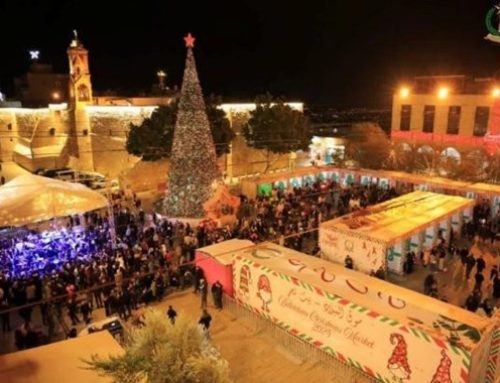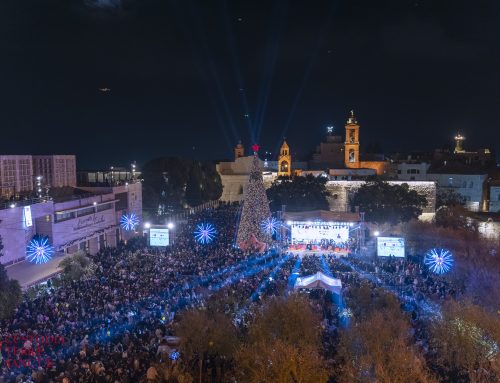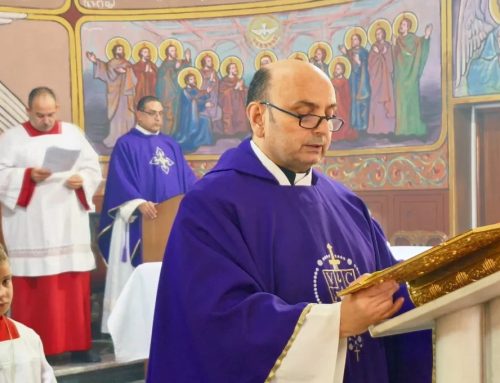An ancient Jordanian map marks Jesus’ baptism site with a distinctive Christian symbol: the fish.
If Umm Qais marks the starting point of the Jordan Trail, the Baptism Site is surely one of its main highlights. Down the Dead Sea Road, not even an hour away from Amman, one gets to Al-Maghtas, the place traditionally (and officially) considered to be Jesus’ baptism site.
Also known as Bethany-Beyond-The-Jordan, this unique archaeological World Heritage site has been venerated since Byzantine times as the location where John the Baptist baptized Jesus (in fact, Al-Maghtas means immersion and, by extension, baptism, in Arabic).
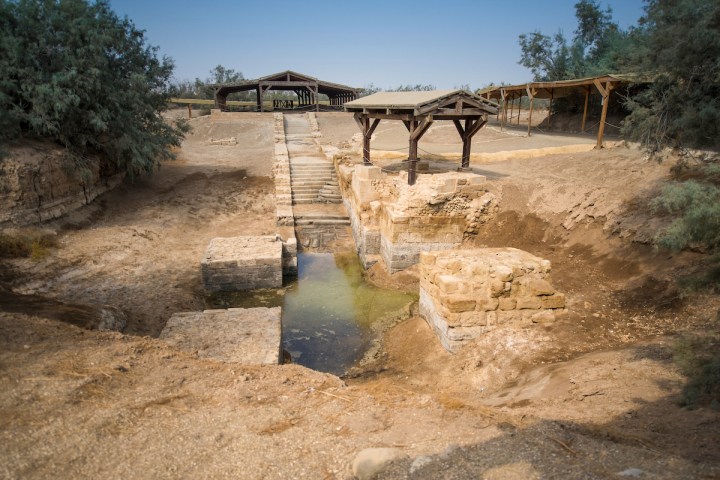
Testimonies like those of Theodosius the Cenobiarch back what the Latin Patriarchate and UNESCO have unanimously claimed. Theodosius’ text reads:
Five miles north of the Dead Sea in the place where the Lord was baptized there is a single pillar and on the pillar an iron cross has been fastened, there too is the church of St. John the Baptist, which the Emperor Anastasius built.
Even if the pillar has not yet been discovered, all the archaeological and architectural remains found in Al-Maghtas match Theodosius’ description.
But Theodosius’ testimony is not the only clue we have to discover the exact location of Jesus’ baptism site. An ancient Jordanian map marks the exact spot with a distinctive Christian symbol: the fish.
The Madaba Map
Driving along the King’s Highway, 30 minutes south of Amman, one finds Madaba, a relatively small city that is nowadays home to around 60,000 people. This city, which belonged to the Moabites, the Nabateans, the Romans, the Byzantine, the Rashidun and the Umayyad throughout history, is now home to the biggest Christian community in all of Jordan, proportionally speaking. Catholics and Greek Orthodox make up around 10% of its total population.
Madaba is mentioned twice in the Bible: once in Numbers 21:30, and once in Joshua 13:9. The city then stood on the borders of the Moabite empire, but during Roman and Byzantine rule, from the 2nd to the 7th centuries, the Christian community of the city established itself: one already finds it mentioned as an Episcopal See in the acts of the Council of Chalcedon in the 5th century.

The Greek Orthodox church of St. George in Madaba, Jordan, is home to some of the most beautiful icons in the region. And it is also the place where the most intriguing (and revealing) map of the Holy Land is found: the so-called “Madaba Map,” an intricate floor mosaic dated to the 6th century, the oldest cartographic depiction of the Holy Land preserved to the day. It covers most of the region, from Lebanon to the Nile delta, from North to South, and from the Mediterranean Sea to the Eastern Desert, from West to East. In it, more than 150 towns, villages, cities and places of interest are featured, including some particularly intriguing symbols that, according to most archaeologists, represent pilgrimage places.
The map shows two fishes facing each other. One of them is swimming back from the Dead Sea, while the other swims towards it, in the Jordan River. But fish cannot survive in the Dead Sea – it is not called the “Dead Sea” out of sheer arbitrariness, after all. How could a fish be “coming back” from the Dead Sea, and why would another fish go there?
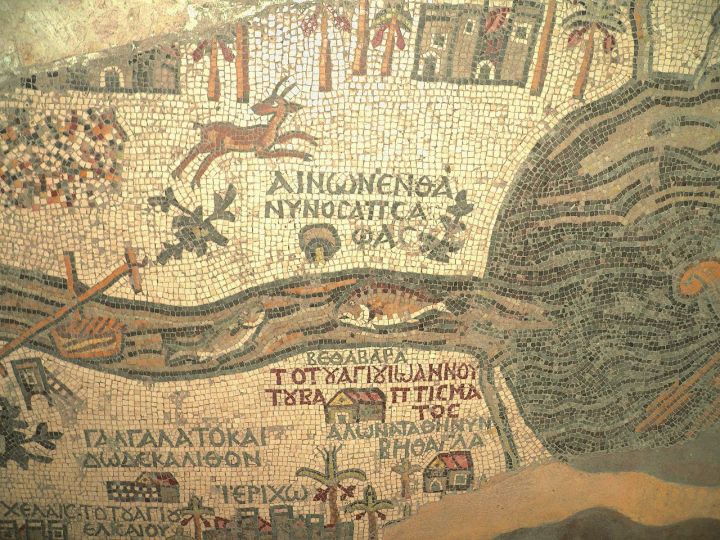
Historians and archaeologists interpret these fishes as symbolizing a meeting point for Christians.
The spot marked on the map was then already known as Bethabara or Bethany-Beyond-The-Jordan (as is mentioned in the Gospels). It is the place in which, according to tradition, Elijah and Elisha crossed the Jordan (Cf. 2 Kings 2). Considering that the figure of John the Baptist is intimately related to that of Elijah (in the Gospel of Matthew Jesus testifies about John, saying “and if you are willing to accept it, he is the Elijah who was to come”), tradition holds this area is that in which John the Baptist started his mission and, consequently, the place where Jesus was baptized. The Gospel of John explains the Baptist’s ministry took place “at the other side of the Jordan” – literally, in Bethany-Beyond-The-Jordan. The text reads:
“I baptize with water,” John replied, “but among you stands one you do not know. He is the one who comes after me, the straps of whose sandals I am not worthy to untie.” This all happened at Bethany on the other side of the Jordan, where John was baptizing.
John 1:26-28
Interestingly, the map is not oriented northwards, like modern maps are. It faces east towards the altar of the church. This, for a very specific reason: the position of the places on the map itself coincides perfectly with the actual compass directions. It is only natural to think that pilgrims visiting this church would orient themselves using this map, knowing where they should head if they were visiting Jerusalem, Jericho, Mount Nebo, Gedara, Lake Tiberiades, or Bethany-Beyond-The-Jordan.
To learn more about these biblical sites in Jordan, and the different pilgrimage sites and itineraries the country offers, visit the Holy Jordan dedicated site. For specific travel deals, promotions, and pilgrimage packages available, visit the Holy Jordan Travel Deals site.
This content has been brought to you in partnership with the Jordan Tourism Board.
By Daniel Esparza | aleteia.org


